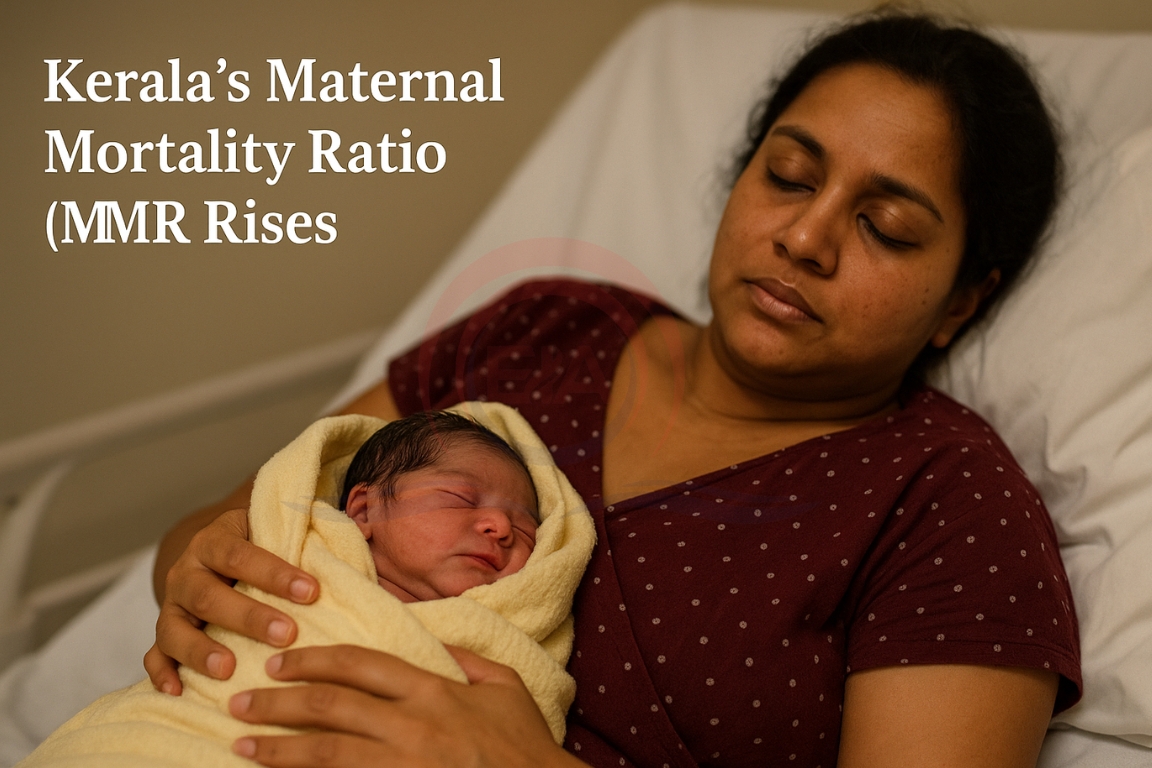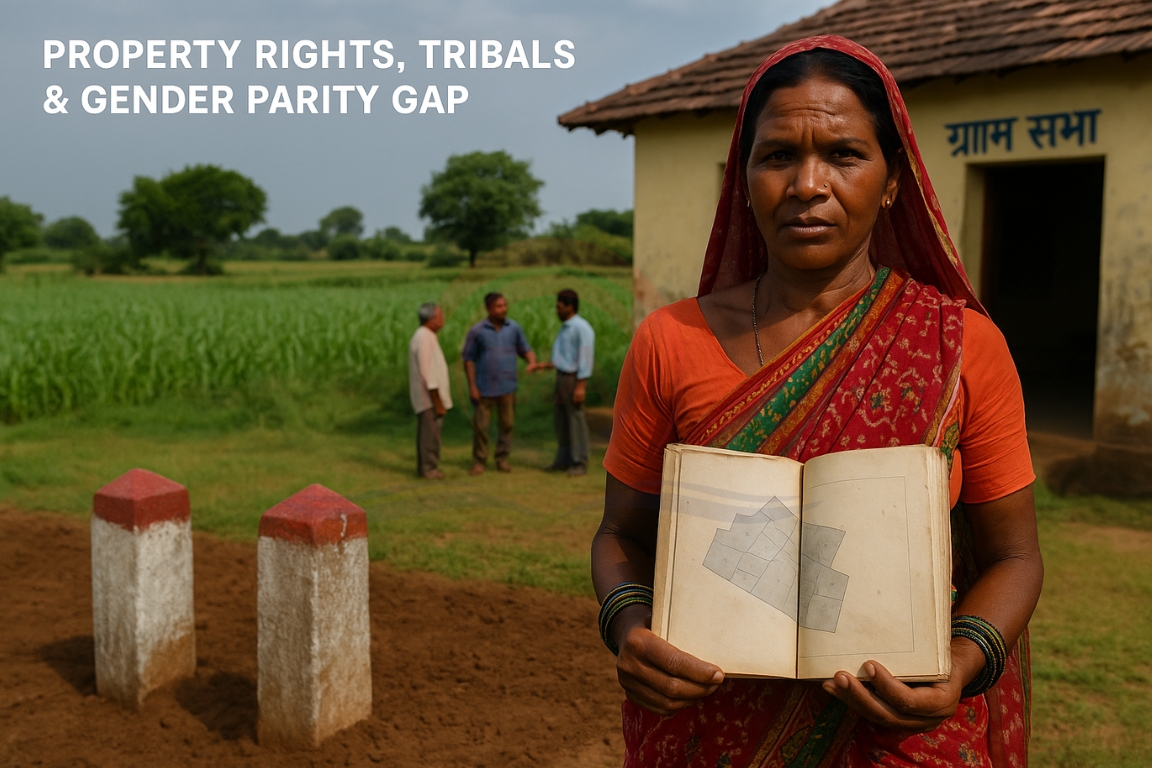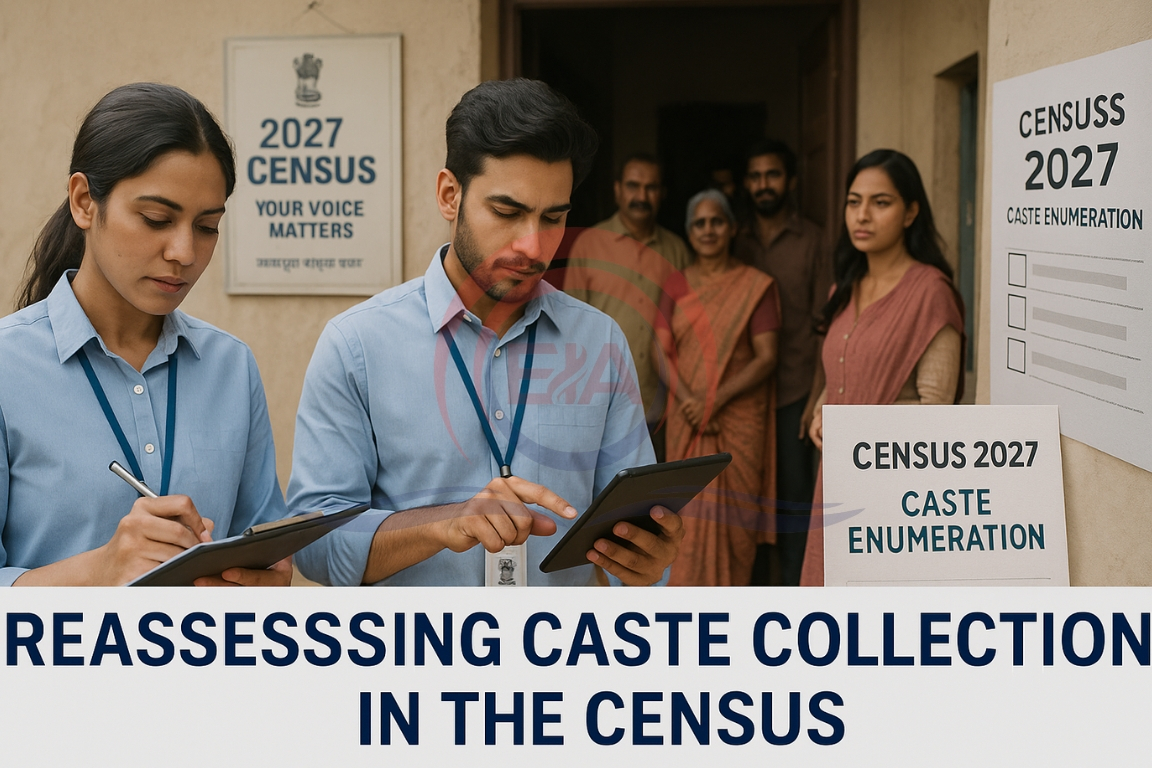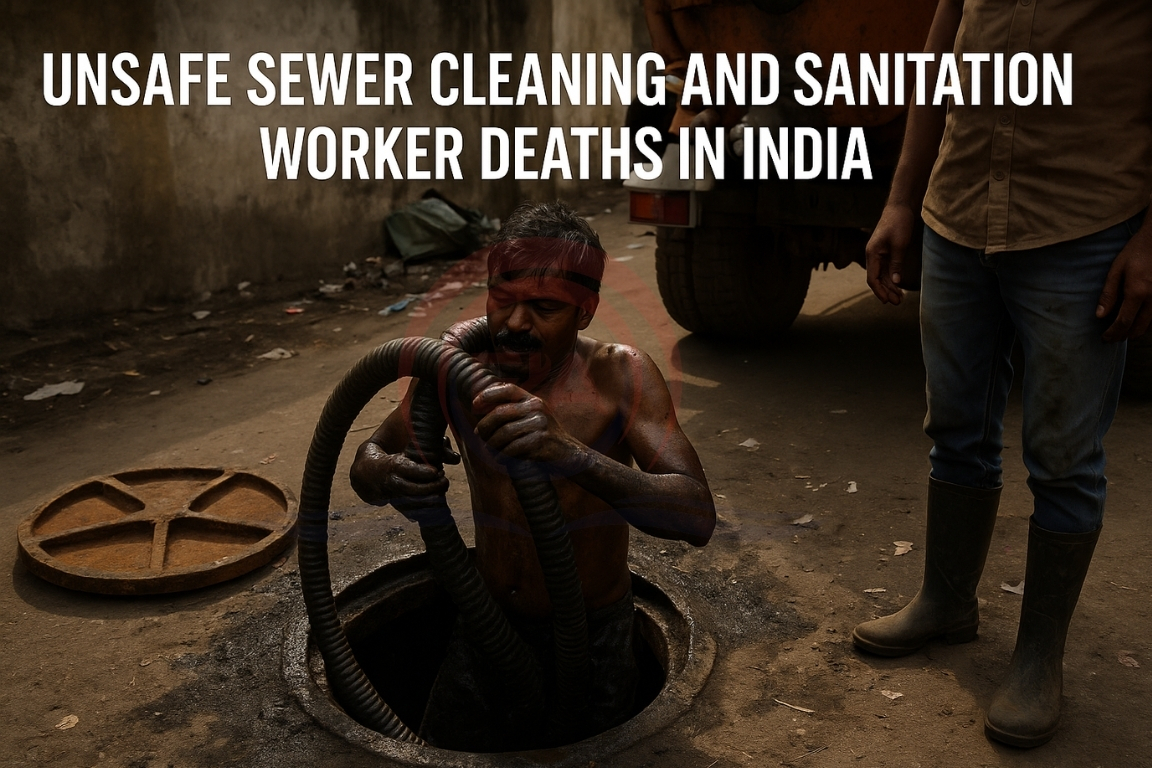The latest SRS bulletin (2021-23) reports that Kerala’s maternal mortality ratio has risen from 18 to 30 per one lakh live births. This rise is linked to fewer live births and the impact of COVID-19-related maternal deaths in 2021.
Maternal Mortality Ratio (MMR)
- MMR is the number of maternal deaths per 1,00,000 live births in a given time period.
- Maternal death refers to the death of a woman during pregnancy, childbirth, or within 42 days of termination of pregnancy, due to causes related to or aggravated by the pregnancy.
- It is a key indicator of maternal health, quality of healthcare systems, and progress towards SDG 3.1 (Reduce global maternal mortality ratio to less than 70 by 2030).
- India has been working to reduce MMR through schemes like Janani Suraksha Yojana (JSY), LaQshya, Pradhan Mantri Surakshit Matritva Abhiyan (PMSMA), and Poshan Abhiyaan.
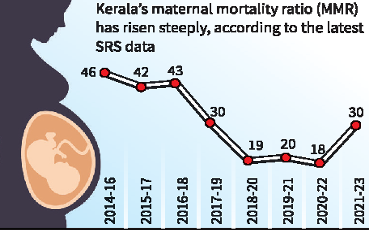
Recent Findings on Kerala
- Kerala’s MMR rose from 18 (2020-22) to 30 (2021-23) per one lakh live births.
- Despite the rise, Kerala and Andhra Pradesh continue to have the lowest MMR in India.
- In 2021, 97 maternal deaths due to COVID-19 were reported in Kerala.
- The decline in the number of live births is amplifying the MMR figures.
Declining Live Births in Kerala
- Kerala earlier recorded 5–5.5 lakh births annually.
- Births have now reduced to below 4 lakh.
- In 2023, 3,93,231 live births were registered.
- Health data projects further decline to around 3.54 lakh (2024-25).
Trends in Maternal Deaths
- Kerala reports 120–140 maternal deaths annually on average.
- In 2021-22, maternal deaths rose to 220, pushing MMR to 51, largely due to COVID-19 complications.
- Otherwise, the State’s MMR has remained around 30–32 for many years.
Variance in Data Sources
- SRS (Sample Registration System): Based on sample surveys, often cited in national reports.
- Kerala Health Department: Maintains a district-level line list, recording every maternal death.
- State officials argue that their figures present the realistic picture compared to SRS estimates.
Policy Concerns
- With declining births and steady maternal deaths, MMR is expected to appear higher in future.
- Kerala had earlier cautioned that the SRS-reported MMR of 18 was an underestimation.
- Safe motherhood programmes remain a priority, but reducing maternal deaths further is challenging due to changing social and demographic patterns (e.g., late pregnancies, lifestyle diseases).
Significance of the Issue
- Highlights how demographic transition (falling fertility rates) can distort health indicators.
- Reinforces the need for strengthened maternal healthcare services, especially for high-risk pregnancies.
- Reflects the importance of accurate data sources in shaping health policies.
Conclusion:
Kerala’s rise in MMR does not reflect worsening maternal care but is mainly due to declining births and the exceptional impact of COVID-19. The State still leads in maternal health outcomes, yet faces new challenges in sustaining progress as its population dynamics change.


